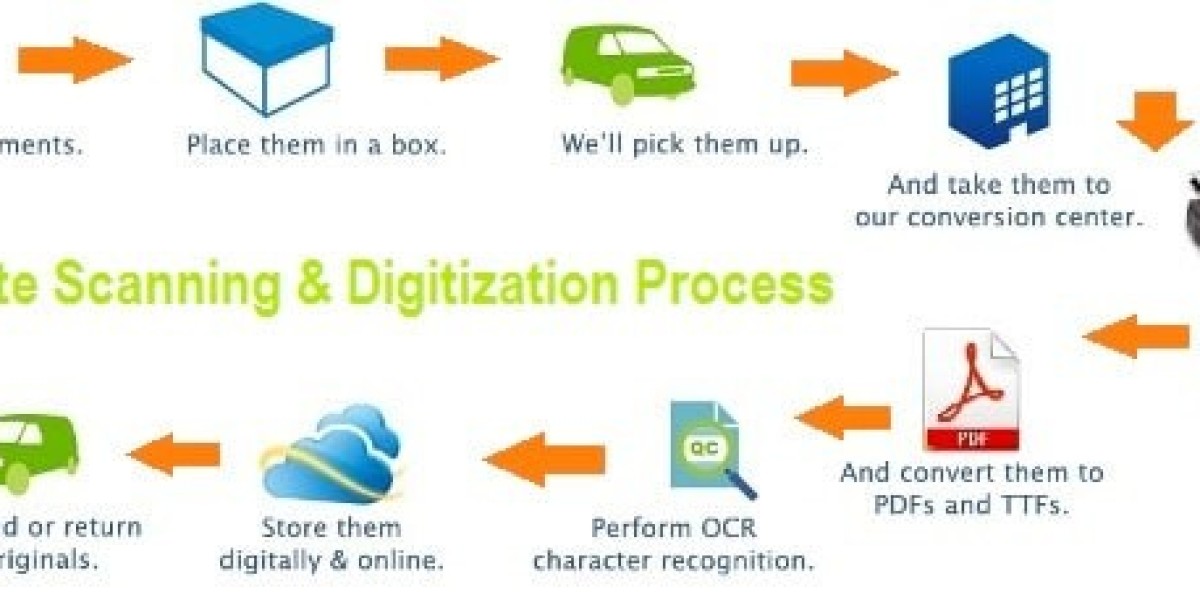In today’s fast-paced digital era, businesses and individuals are increasingly recognizing the need to move from paper-based workflows to digital ecosystems. Scanning and digitization are at the heart of this transformation, offering a streamlined, efficient, and secure way to manage documents and information. This blog explores the significance of scanning and digitization, their benefits, best practices, and their role in shaping the future of document management.
The Importance of Scanning and Digitization
Scanning and digitization involve converting physical documents into digital formats. This process not only helps preserve important records but also enhances accessibility and operational efficiency. From historical archives to business contracts, digitization ensures that vital information is readily available and safeguarded for future use.
Benefits of Scanning and Digitization
Space Optimization
Digitized documents eliminate the need for bulky filing cabinets, freeing up office space and reducing storage costs.Enhanced Accessibility
Digital files can be accessed anytime and anywhere, enabling remote work and improving collaboration. A simple search can locate specific documents within seconds.Data Security
Digital documents can be encrypted and backed up, reducing risks associated with physical loss, damage, or unauthorized access.Eco-Friendly Practices
By reducing reliance on paper, scanning and digitization contribute to sustainability and environmental conservation.Improved Organization
With metadata, indexing, and tagging, digital documents are easier to organize and retrieve, minimizing time spent searching for information.
Best Practices for Scanning and Digitization
Choose the Right Equipment
Invest in scanners that suit your needs, whether for high-volume batch scanning or specialized scanning for delicate materials.Set Quality Standards
Use appropriate settings like resolution (300 DPI for text documents, higher for images) and color mode (grayscale or color, depending on the document type).Utilize Optical Character Recognition (OCR)
OCR technology converts scanned images into editable and searchable text, enhancing document usability.Organize with Care
Develop a consistent naming convention and folder structure to categorize and manage digital files effectively.Backup and Secure
Store digitized files in secure cloud storage or on-premises servers with regular backups to ensure data integrity and availability.
Applications of Scanning and Digitization
Business Operations
From invoices to employee records, digitization improves workflow efficiency and compliance with data management regulations.Education
Libraries and institutions digitize books and research materials to facilitate learning and preserve knowledge.Healthcare
Medical records, prescriptions, and reports are digitized to enhance patient care and streamline hospital operations.Government and Legal
Public records, legal contracts, and historical archives are scanned to ensure accuracy, accessibility, and long-term preservation.
Emerging Trends in Scanning and Digitization
Cloud Integration
Digitized documents are increasingly stored and managed through cloud platforms, enabling seamless access and collaboration.Artificial Intelligence
AI-driven tools automate processes like document categorization, data extraction, and predictive analytics, further enhancing efficiency.Mobile Scanning
Smartphones are transforming digitization with apps that allow users to scan, edit, and share documents on the go.Blockchain for Record-Keeping
Blockchain ensures the authenticity and traceability of digitized records, particularly in legal and financial sectors.
Conclusion
Scanning and digitization are no longer optional—they are essential for staying competitive and efficient in a digital-first world. By adopting best practices and leveraging modern technologies, organizations and individuals can harness the full potential of digitization. Whether it’s preserving history, improving workflows, or enhancing accessibility, scanning and digitization bridge the gap between the physical and digital worlds, paving the way for a smarter and more sustainable future.






